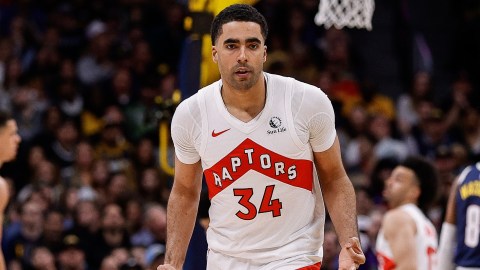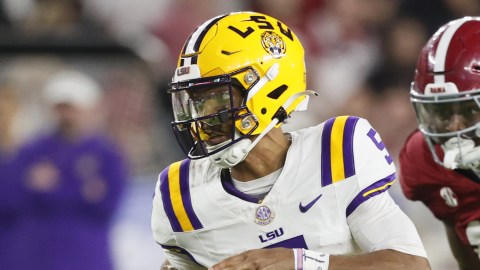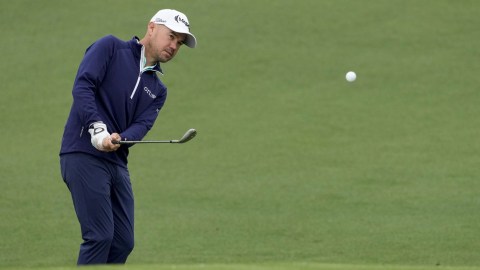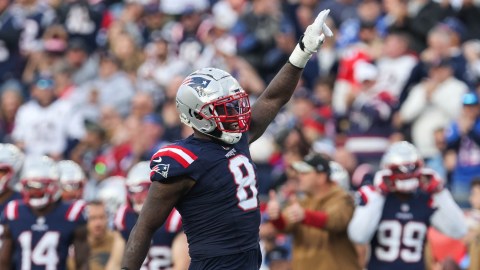Who doesn’t like a Summer blockbuster? 2022’s Jurassic World Dominion, Thor: Love and Thunder, Elvis, and Bullet Train could soon be joined by Beantown Baller: Kevin Can’t Wait.
Pardon the terrible imaginary movie title, but on the news that the Boston Celtics have re-emerged as a landing sport for Kevin Durant, it got us thinking about some of the other landscape-shifting swaps of Summer’s past. What better place to start than the place KD could be heading, the Gah-den itself.
T’Wolves Toss Ticket
The most substantial trade Boston has made in any of Mother Nature’s four seasons in recent years went down almost 16 years ago to the day. Coming off an abysmal 2006-07 season where they had the league’s second-worst record, a frustrated homegrown superstar demanding a trade of his own, and an impatient fanbase, the C’s cashed in on the Big Ticket.
Kevin Garnett went from the Minnesota freeze to Celtics green on July 31st, 2007. With the arrival of the 2004 MVP and seemingly every-year All-Star, Paul Pierce’s discontent in Massachusetts subsided. Picking up one of the best pure shooters of all time less than a month earlier didn’t hurt Paul’s patience either.
A smaller trade on Draft Night, but blockbuster in its own right, brought Ray Allen in from the Seattle Supersonics. The C’s gave up Georgetown’s Jeff Green (Boston’s fifth overall selection), Delonte West, Wally Szczerbiak, and a 2008 second-round pick.
At the time, grabbing Garnett was the biggest trade in NBA history. The Timberwolves got Ryan Gomes, Gerald Green, Al Jefferson, Theo Ratliff, Sebastian Telfair, and two 2009 first-round picks in a 7-for-1 deal the likes of which had never been seen before.
While Jefferson became Minnesota’s leading scorer in his first season with the T’Wolves, his contributions paled in comparison to KG’s debut campaign in Boston. The OGs of Big Three ball won the NBA championship largely due to Garnett’s intensity, leadership, and on-court numbers.
In addition to adding the much sought-after title he yearned for during those 12 seasons in Minnesota, KG also gave the world his most memorable catchphrase.
Garnett would not taste another championship in Boston as Kobe Bryant’s Lakers snuffed out the C’s in a fantastic seven-game Finals in 2010. KG did lead Boston to five division titles and two more appearances in the conference in his six-year tenure in green and white.
Lakers Land Leading Man
Just days before what is widely regarded as the very first Hollywood blockbuster was released, there was no better franchise to pull off basketball’s blockbuster of the decade than the LA Lakers.
While the rest of the league’s trade pool would not be warned by the scariest, most well-known horror music of all time, an apex predator was landing in the Lakeshow and was awfully hungry for a championship.
Kareem Abdul-Jabbar became a member of the yellow and gold on June 16th, 1975. The Milwaukee Bucks shipped the man formerly named Lew Alcindor west for Elmore Smith, Brian Winters, and top prospect rookies Dave Meyers and Junior Bridgeman.
While it certainly wasn’t equal to the $20 million Jaws made over its initial 10 days or $100 million, the film raked in to become the first to hit that money milestone – cash was also heading Milwaukee’s way in this deal.
Kareem had clout after bringing the Bucks a pair of titles and establishing himself as the premier big man in the game. Demanding a deal with LA as one of his preferred destinations, Abdul-Jabbar forced Milwaukee’s hand. Sure, Wisconsin’s little town that could wouldn’t win a championship again until today’s premier big man, Giannis Antetokounmpo, grabbed the Larry O’Brien in 2021, but they did OK in this deal.
Winters and Bridgeman were long-time Bucks and have their number in the rafters at Fiserv Forum. The rest of the pieces ended up inconsequential, but considering Kareem was contemplating sitting out the season – things could have been uglier if a deal was not worked out.
Kareem didn’t sit out but stood tall as the first seedlings of the Showtime Lakers dynasty were sowed in LA. The then 28-year-old led the leagues in rebounds (16.9) and blocks (4.1) in his first season in California. Abdul-Jabbar was also a beast on the offensive end, with almost 28 points per game on 53 percent shooting.
The soon-to-be comedic actor won the first of back-to-back league MVP awards in his inaugural season. Kareem’s encore performance came in 1980 when he captured his third Maurice Podoloff Trophy with LA (fifth of his career) while bringing the Lakers their first title since his arrival.
His encore’s encore came the same year when he appeared in the classic farce Airplane. Even in the movies, Kareem had to defend himself.
Seven-Foot Superstar Starts LA’s Game of Fame
Seven summers before LA landed their multi-MVP, thespian, and face of the franchise, they traded for another game-changing man in the middle. While few players are big enough to cast a shadow over Kareem and the Hollywood Sign, this center had a triple-digit distinction even The Cap couldn’t touch.
The only man to score 100 points in an NBA game became a Laker on July 9th, 1968. Sure, the truly awesome offensive performance came six years before Wilt Chamberlain donned purple, but the Stilt was still built for the bright lights.
Fresh off a year where he led the league with an astonishing 23.8 rebounds per game and brought Philadelphia a title, Chamberlain was dealt for Darrell Imhoff, Archie Clark, and Jerry Chambers, plus an undisclosed amount of cash.
Wilt arrived on the west coast after taking three straight MVP awards with the 76ers looking to help Jerry West and Elgin Baylor to their first championship. While the trio had a little trouble with chemistry at first, they did reach the finals that year only to drop their second straight to Boston.
Chamberlain did his part to get them there, again leading the league in rebounds, field goal percentage, and minutes played.
Wilt arguably had a better year in season two with the Lakers, upping his offense from 20.4 to 27.2 points per game. Only the man on the NBA logo, Jerry West, scored more for LA in 1970. The seven-footer’s rebounding did drop a tad, but no one is complaining about 18 boards a night.
When it came to a championship, it was a repeat of the previous two seasons for LA as they lost its third finals in a row, this time to the New York Knicks.
The Big Dipper’s crowning moment finally came in ’72 when he led the Lakers to their first title since they moved to LA from Minneapolis in 1960. Wilt captured the league championship and Finals MVP after the regular-season rebound king dominated the Knicks on the glass. Chamberlain averaged 23.2 boards in the five-game series win over New York while adding 19.4 points per game.
Regarded as one of the best players of all time, Chamberlain’s called it a career as a Laker in ’73. He went out on top, leading the NBA in rebounding and field goal percentage in his final season.
Some don’t realize Wilt was also a great passer, as he holds the NBA single-season record for assists by a center. Long after he set the mark with 8.6 helpers per game in ’68, the big man threw an assist to the 1980s king of Summer blockbusters. One of LA’s best big men battled the future Governor of California in 1984’s sequel to the action epic, Conan. While Destroyer didn’t hit the box office numbers of the original, Wilt battled Arnold Schwarzenegger in the barbarian paint with the same ferocity he banged Bill Russell in the key on the hardcourt. Ladies and gentlemen, I give you Bombaata.



